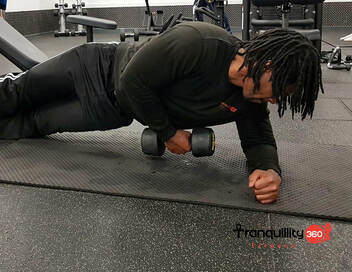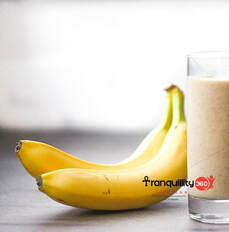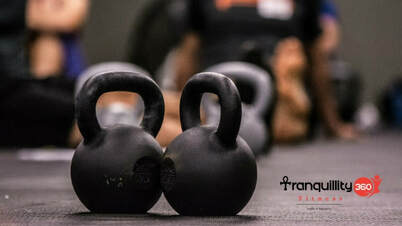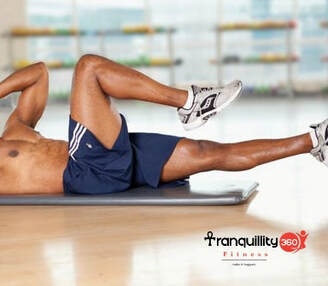 When it comes to core, six-pack, eight-pack (genetic freaks), washboard, whatever you want to call it, your core is the show piece for any muscular physique. It is the eye-catcher for the opposite sex. A muscular and well-defined core shows both strength and health. Both men and woman strive to have a strong, toned midsection, but very few of them ever achieve getting one. If you have been looking for the perfect program to get you the tight, strong core you always looked for, look no farther. In this article, Tranquillity 360 Fitness Personal Trainer Malachi will run over the basic anatomy of what makes up the core, and a basic core workout program strengthen your midsection. Diet and cardiovascular training will have to be in check for you to see your abs. This article will only focus on the training that goes into building and strengthening your mighty core. The core is composed of four different parts. Below, we will discuss where each is located, what its function is in the body, and a couple exercises you can do to stimulate the muscle. Rectus Abdominus
Oblique
· Function: Elevation and depression of the ribs · Exercise: Air Bike Serratus· Location: Between front abs and lats. · Function: Pulling of the scapula forward and around like in the motion of throwing a punch · Exercises: Barbell Pullovers and Cable Crunches Rep RangesThe core is made up of primarily fast-twitch muscle fibers. Fast-twitch muscle fibers are denser than their counterparts (the slow-twitch muscle fibers. Hence, hard, heavy, and explosive bouts of exercise will stimulate fast-twitch fibers a lot more. This means that core training should be in the moderate rep range for best growth. No more endless reps of crunches and sit-ups like you've done in the past. Focus on sets in the 8-15 rep range. Now that you understand which muscles make up the core, their function, location and the rep range needed to stimulate them, let's give you some workouts to help you get that strong muscular core. All exercises should be performed in perfect form because bad form or habits you start now will follow you and will lead to lack of progress or injury in the future. Many, if not all, the exercises will be new to you. Basic Core workout ProgramCrunches 3 sets, 12 reps (30 seconds rest) Reverse Crunch 3 sets, 12-15 reps (45 seconds rest) Air Bike 3 sets, 12 reps (30 seconds rest) Frog Sit-Ups 3 sets, 12-15 reps (30 seconds rest) Oblique Crunches 3 sets, 12 reps (30 seconds rest) Dumbbell Side Bend 3 sets, 8 reps (30 seconds rest) Conclusion There you have it: strengthening workouts. For your core every 2-3 days. This workout sure will help you get that strong muscular core you are looking for. If you want to know more about core workouts and bespoke programs get in contact info@tranquillity360fitness.com
1 Comment
 If you’re looking to stock up on some muscle or trim down to fit into your favourite jeans again, then why not try these protein shake recipes to complement your protein powder, maximise flavour and enhancing results. Not only will these delicious breakfasts and meal-replacement protein smoothies, boosting pre- and post-workout protein shakes, but these great-tasting proteins shake recipes can help you power through your days. The Perfect Fruity Protein Breakfast Smoothie This is the protein smoothie recipe you can use to make a delicious and nutritious breakfast shake every single time. Combine Tranquillity 360 Fitness Protein Powder with fresh fruit and milk for a tasty start to the day. Ingredients
Simply blend all the ingredients together, pour into a glass, and enjoy. Kick Coffee and Cacao Smoothie This coffee and cacao breakfast shake have the perfect blend of protein, carbs and fats with a coffee wake-up kick. Try. Ingredients
Method Simply blend all ingredients and serve over ice. Wake Me Up Fat Burning Smoothie With the bittersweet matcha and protein powder in combination with spicy root ginger and fresh sweet peaches, this smoothie was made to make you feel revitalised all morning while burning fat.
Chop the peaches and place into blender, along with matcha whey, ginger a On The Run Breakfast SmoothieThis breakfast smoothie makes the perfect make-ahead breakfast for those mornings when you just don’t have time to make a proper breakfast. Ideal for Athletics and Gym lovers. Ingredients
Simply add all ingredients to the blender and process until smooth. Pour into a glass or shaker and top with a couple of extra dates and nuts if you’re feeling fancy.  Move over, dumbbells; kettlebells are cool again. The little weights with handles have been used by athletes around the world for centuries and gained popularity as the staples of 19th-century strongmen. Today, kettlebells have made it to the mainstream as the featured tools in exercise classes and gyms, with home versions of kettlebells available on the shelves of every big-box store. What's the attraction? Kettlebells work multiple muscle groups at one time, so you get a lot of bang for your buck with each exercise. How they help Kettlebells are heavy: the smallest is about 3KG, but available weights go up to 30KG at the competition level. And they have many benefits. Holding a lot of weight by a handle engages your arm, leg, shoulder, back, and abdominal muscles. The pull on your muscles helps to strengthen them. The pull on your bones helps stimulate new bone cell growth. Using kettlebells can improve your posture, with the weight in front of you, your back muscles must straighten up more to counteract the force of the kettlebell pulling you forward. Swinging a kettlebell also challenges your balance and helps to improve it. Kettlebell risks Along with benefits, kettlebells have numerous risks. One is obvious: dropping the weight on your foot. But lifting too much too soon or lifting a kettlebell the wrong way can lead to muscle strains, rotator cuff tears, and falls. If you have the bone-thinning disease osteoporosis or its precursor state osteopenia, lifting a heavy kettlebell may increase your risk for fractures, caution some experts. If you're at high risk for falling, using a kettlebell can add to your fall risk. Should you try it? Using kettlebells should be safe for healthy young and older adults, with some stipulations:
But you may want to stay away from kettlebells if you pick one up and can't control it or feel like you're losing your balance, or if you experience pain in your shoulder, low back, or leg. Basic Starter Kettlebell Exercises If you're cleared for kettlebell use, you'll be guided through simple but challenging exercises, such as these: The farmer's walk. Pick up one kettlebell on each side, pinch your shoulders down and back, and walk 20 feet (across a gym) four times. The suitcase carry . Pick up a kettlebell with one hand (like you're carrying a suitcase) and walk 20 feet (across a gym) four times. Don't lean to the side. Repeat the exercise while carrying the kettlebell on the other side. The goblet carry . "Pick up the kettlebell with two hands and hold it in front of you as if you're taking a sip from it. "Then walk 20 feet back and forth a few times. That works your arm muscles, shoulders, biceps, and upper back muscles." The kettlebell swings. Hold the kettlebell with two hands and swing it back and forth between your legs. If you are interesting kettlebell customised workout program, then Tranquillity 360 Fitness Personal Trainers/ Fitness Experts can design a bespoke program tailored for you. .  For decades if not centuries, medical experts have warned that a big belly is more harmful to your heart than extra padding in your hips and thighs. A growing number of people around the world now sport this unhealthy "apple-shaped" profile, according to the latest statistics from the CDC. The average waist circumference for men is now 40.2 inches, up from the 39 inches recorded in the last survey, which was done in 1999–2000. Women's waist measurements also rose — from an average of 36.3 to 38.6 inches. That means that most people now have belly sizes that put them at high risk (see "Gut check: How to measure your midsection"). "As your waistline expands, so does your risk of cardiovascular disease, Belly fat — what doctors refer to as visceral fat — turns out to be very different from fat that accumulates in the hips and thighs. But even though some people are predisposed to larger midsections, there's a lot you can do to remedy the problem. Location matters Visceral fat accumulates deep within the abdominal cavity, padding the space between the organs. When these fat cells break down, they shower the portal vein (the vein that carries blood from the intestinal area to the liver) with free fatty acids and other substances. The resulting state of "lipotoxicity" affects the nearby pancreas, hampering its ability to produce insulin, the hormone that carries glucose into the body's cells. Lipotoxicity also promotes insulin resistance, in which the body's muscle and liver cells don't respond adequately to normal levels of insulin. As a result, blood sugar levels rise, boosting the risk for type 2 diabetes. In addition, when these misplaced fat cells die, cells that serve as the clean-up crew release inflammatory substances called cytokines. "Those cytokines are one reason people develop atherosclerosis, the underlying cause of cardiovascular disease”. In contrast, fat that collects in the hips and thighs seems to be less harmful. People with this "pear-shaped" profile of fat distribution are less prone to diabetes and heart disease than people with bigger bellies. Who is vulnerable? Your genes, ethnic background, and sex all influence how likely you are to accumulate visceral fat. The problem is less common among people in Mediterranean countries, where cardiovascular disease is also less prevalent. But Native Americans, Pima Indians, Hispanics, and people living in India and South Asia have a higher likelihood of abdominal obesity (as well as type 2 diabetes). Finally, white men and black women tend to accumulate relatively more visceral fat compared with black men and white women. Girth control While there's no magic formula for losing belly fat, a reduced-carbohydrate diet can be helpful, particularly if you have type 2 diabetes. You don't need to avoid all carbs — just stay away from those that quickly spike your blood sugar levels and encourage your body to store fat. These three sources are the major culprits:
|
AuthorsThis blog is updated by Tranquillity 360 fitness personal trainers, as well as other guest bloggers. Archives
July 2021
Categories |

 RSS Feed
RSS Feed